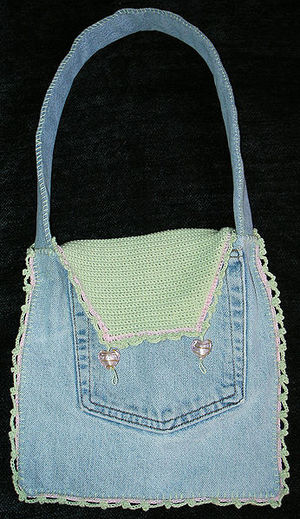While a biennial flower garden can be planted from flowers purchased in flats, it can be much more exciting to watch the development of a biennial’s life cycle. A biennial is any plant that takes two years to attain its full life cycle. During its first year as it grows from the seed, it develops leaves, while in the second year of its growth, the flower buds develop. Biennials can reseed after they blossom so if you allow the seeds to fall to the soil, they will start a new two year cycle providing more flowers for your garden.
Below is a list of some biennial flowers and how to plant their seeds:
Sweet William, also known as Dianthus, can easily be grown from seeds when planted in well drained soil in a sunny area. These pretty flowers come in pink, red, white and purple, sometimes with two colors with a white edge bordering the flower blossom. Pink and white, and purple and white are common colors and are quite attractive when mixed with solid colored dianthus. Before planting the seeds in the late spring, you can add some fertilizer to the soil to help encourage the germination of the seed. Plant the seed 1/8″ deep in the soil and cover lightly with soil. Water once a week during the first year, fertilizing the plants just as frequently. As they grow, thin out the plants. During the second growing season when the flowers start to blossom, continue to water once a week. The flowers can be cut and placed in vases. Pinch off some of the dead blossoms but leave the others so they automatically seed the following year.
Foxglove, also known as Digitalis, can be planted in the late spring and produce blossoms the following year. This plant comes in shades of white, pink, and purple. Foxglove grows well in partial shade and can grow in moderately rich soil. Plant the seeds in 1/8″ deep and cover lightly with soil. Keep the plants watered once the seeds germinate the first growing season, as these plants like moist soil. Foxglove prefers cool weather to grow in so map out an area in your garden that has shade where these plants can grow. During the second year of growth, use an all purpose fertilizer to encourage blossoms on the plants. Foxglove is beautiful as a cut plant and some of the dead blossoms on the flowers can be left to seed the next cycle of growth.
Black-Eyed Susan seeds can be planted in the spring or fall. Plant in well drained soil about 1/8″ deep and cover with a thin layer of soil. If these seeds are planted early enough they may blossom the first year late in October and continue blossoming the next year. When the seeds germinate, keep them watered at least once a week. During the second growing season, they do not require as much watering and can blossom even in dry soil conditions. These bright yellow flowers really stand out in any garden and because they tend to grow tall, plant the seeds behind lower growing plants in your garden.
Hollyhock seeds can be planted after the last frost has passed from the ground. The seeds should be sown from 4″ to 6″ apart, 1/8″ deep in well drained soil in a sunny area. Hollyhocks grow from 4′ to 5′ in height in a range of colors: white, red, yellow, pink, and purple. Once the seeds germinate, thin out the plants to at least 18″ apart to allow for enough room for them to grow. Water the plants once a week. After the first growing season, stick a free standing trellis in the ground for the tall plants to lean against if necessary. Rust can form on hollyhock plants so a fungicide may have to be applied.
Pansies, while usually purchased in flats in the spring and planted in the ground, can also be purchased and grown from seeds. They take a long time to germinate but will grow if they are kept warm once planted in the ground. Pansy seeds can be planted in the late spring or summer, and blossom the following spring in growing zones 6 to 10. Once the seeds germinate and develop leaves, thin the plants to 6″ apart. Pansies will blossom better once flowers are cut off for vases.
Queen Anne’s Lace is related to the carrot but is a member of the parsley family. The flower is so called for its lacy flower blossoms. This beautiful wildflower grows along roadsides and in forests but can also be grown from seeds in your garden. They will grow well in almost any soil condition except heavy clays. The plants grow 2′ to 4′ tall and require little care except the occasional watering. Sprinkle the seeds in a shallow groove in the soil and lightly cover after the last frost. The flowers will blossom the following year. Queen Anne’s Lace will seed after its life cycle and create more beautiful flowers.
Delphinium seeds can be planted as soon as the last frost has passed. Plant the seeds 1/8″ in the ground in full sunlight or partial shade and cover with a thin layer of soil then water thoroughly. Delphinium comes in white, blue, and purple flowers and are big and showy. They grow from 2′ to 3′ in size, with the young plants being thinned to 1 foot apart. They will blossom the following season in regions 6 to 10. Like other biennials, they will seed at the end of their life cycle.
When your biennial gets ready to seed, save some of the seeds and store them in small plastic bags after they have completely dried out. You can plant these in another part of your yard the following year, or give some away to friends or family for their gardens.





